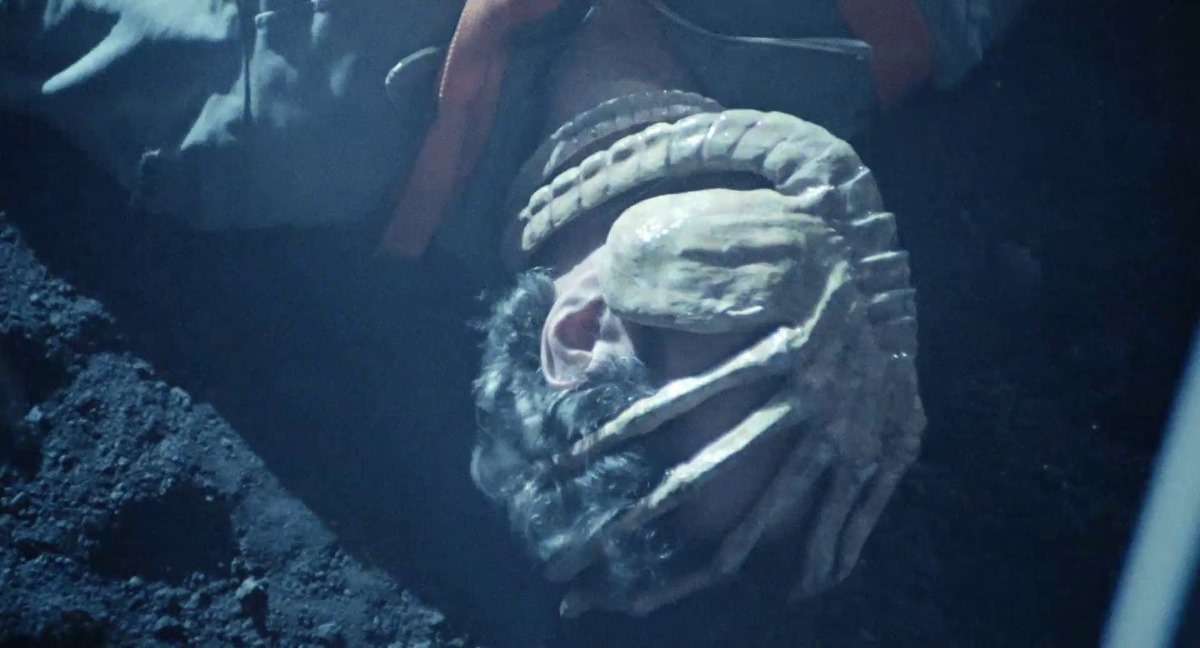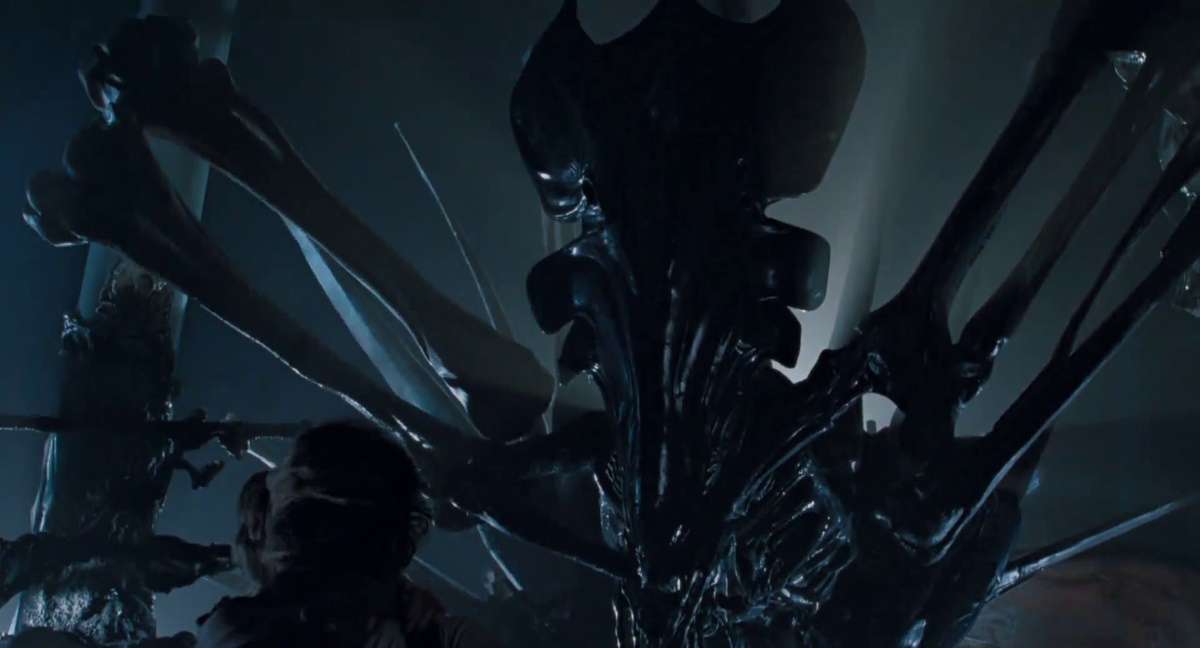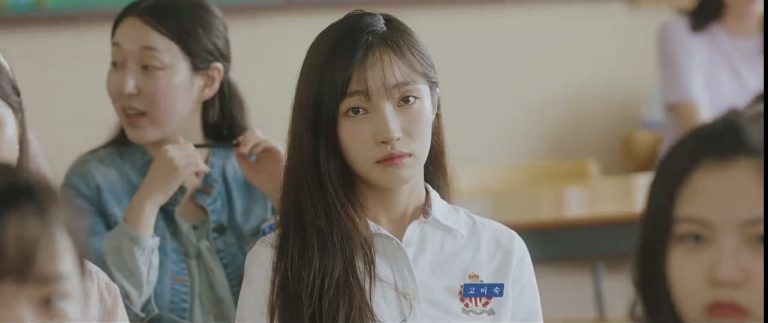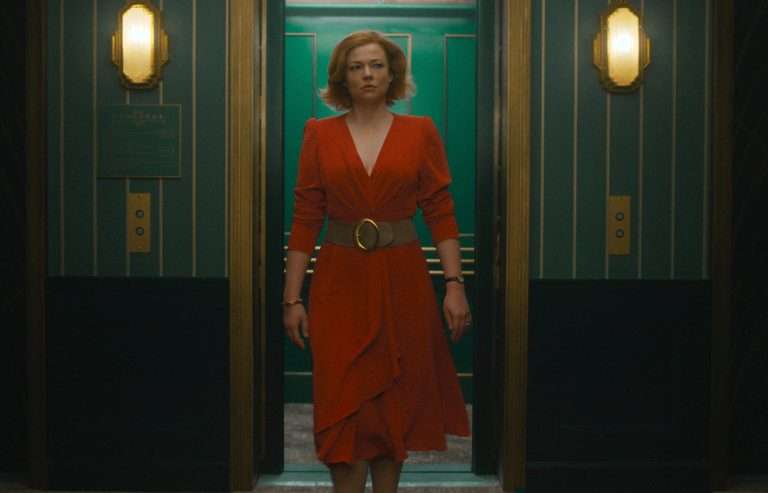Aliens (1986) Movie Ending Explained: It is not easy for sequels to equal or better the original film. James Cameron’s Aliens (1986) was one such rare spectacle that’s as fascinating and thrilling as Ridley Scott’s benchmark sci-fi horror, Alien (1979). While Ridley Scott went for an eerie, haunted house set up to chronicle a Xenomorph’s terrifying rampage inside the spaceship Nostromo, Cameron made a riveting action film as Ripley and the soldiers fight against a Xenomorph hive. It’s intriguing how two incredible filmmakers of an era established their respective films as the best in the genre while dealing with a similar extraterrestrial menace.
James Cameron was hired to write the script for Aliens in 1983 before his solo directorial debut, The Terminator (1984). However, the production began only in 1985, with David Giler and Walter Hill contributing to the story. Aliens (1986) was a critical and commercial hit and received seven Oscar nominations, including a nomination for Sigourney Weaver. Aliens was followed with two sequels and two prequels directed by Ridley Scott himself. However, despite the expansive scope of the franchise and the addition of backstories, none of the other Alien franchise movies came close to replicating the brilliance of Alien (1979) and Aliens (1986).
Now, let’s take a detailed look at the plot and the ending of James Cameron’s Aliens (1986). Spoilers Ahead.
Aliens (1986) Plot Explained:
How many years did the Narcissus drift in space?
In the year 2122, the crew of the spaceship Nostromo (a cargo hauler pulling a massive automated oil refinery) traced an unidentified signal emanating from the planetoid LV-426. Under Weyland-Yutani Corporation’s order, the crew reaches LV-426 to investigate the signal and find a derelict ship with a deadly Xenomorph specimen. In the ensuing chaos, a lone Xenomorph kills the crew, except the ship’s warrant officer, Ellen Ripley (Sigourney Weaver). She sets Nostromo to self-destruct (and its refinery cargo) in an attempt to eradicate the Xenomorph. Ellen Ripley and the ship’s cat Jones escape in the shuttle Narcissus. After recording a distress message detailing the fate of Nostromo’s crew, she puts herself in stasis for the journey home.
Narcissus was set adrift for fifty-seven years before a deep salvage space team finds Ripley and Jones in hypersleep. She wakes up in a medical facility at Gateway Station. Weyland-Yutani representative Carter Burke (Paul Reiser) briefs Ripley about her long hypersleep. Ripley is shocked to hear the news and troubled by the horrific events aboard Nostromo. With only Jonesy as a company, Ripley gradually recuperates. From Burke, Ripley hears that her 11-year-old daughter, whom she left on Earth in 2122, has died at age 66. Later, Ripley gives her deposition to the corporation employers alongside members of the Interstellar Commerce Commission (I.C.C.) and Colonial Administration.
What does the Hadley’s Hope survey team find in the derelict ship?
Everyone remains skeptical after hearing her story about alien eggs in a derelict ship on LV-426. Ripley is demoted, and her license as a commercial flight officer is suspended. When Ripley confronts the head of the ICC tribunal, Van Leuwen, about LV-426, he says they don’t need to check the planetoid since, for the last two decades, families of Terrafomers are living there, and no one has reported a hostile organism.
Around 60 to 70 families of terraformers are currently inhabiting LV-426. They have set up massive atmosphere processors and would work decades to make the air completely breathable. In the planetoid’s Weyland-Yutani base, known as Hadley’s Hope, a couple of workers speak of the survey team that has been sent to a particular grid on the company’s orders. A family of four – mom, dad, girl, and boy – traverse the craggy landscapes of LV-426 in a rover and find the derelict ship. Jubilant that they have discovered something big, the couple enters the vessel to investigate. After a while, the mom, in a delirious state, calls the base. The girl ceaselessly screams as she sees her dad lying down with a parasitic facehugger on his face.
Why did Weyland-Yutani lose communication with the LV-426 Colony?
Burke and Lieutenant Gorman (William Hope) of the Colonial Marine Corps meet Ripley to convey the grim news that all contact with the colony on LV-426 has been lost. They ask her to accompany a team of Marine Corps to investigate what happened to the people of Hadley’s Hope. Burke tempts her with an offer that Ripley wouldn’t have to work the docks if she accepted to go. She’d be reinstated as the flight officer. While this offer looks good, Ripley primarily agrees to revisit LV-426 because she constantly has nightmares about the Nostromo incident. Ripley feels it’s better to face her fears and trauma rather than get stuck doing a menial job and suffer from nightmares.
Ripley’s only condition to take up the job is to wipe out the Xenomorphs. Burke agrees to the condition, although it’s apparent that Weyland-Yutani doesn’t send its employees without an ulterior motive. Ripley, Burke, Gorman, and eleven Marines are aboard USS Sulaco, which is on its way to LV-426. The Marines are led by the cigar-chomping Master Sergeant Apone (Alexander Basil Matthews). The other noticeable personalities among the Marines are Corporal Hicks (Michael Biehn), Private Hudson (Bill Paxton), and Private Vasquez (Jenette Goldstein). Sulaco’s Executive Officer is the synthetic (artificial person) Bishop (Lance Henriksen). Considering what the synthetic Ash (Ian Holm) did aboard Nostromo, Ripley naturally distrusts Bishop.

Ripley and the Marines reach the Colony
While briefing the Marines about Nostromo and their potential encounter with the Xenomorph, Ripley faces the same amount of skepticism directed at her during the deposition. Private Hudson and Vasquez particularly taunt Ripley with their showcase of bravado and tomfoolery. As the Marines prepare for the mission, Ripley shows her skills by effortlessly using a Power Loader. The entire crew, including Burke and Ripley, get inside an Armored Personal Carrier, which is all ready to roll once the dropship Bug Stomper reaches Hadley’s Hope. After a turbulent drop into LV-426’s atmosphere, the crew sees that the colony’s structure and power are still intact, although there isn’t any activity.
Ripley, Gorman, and Burke remain inside the armored vehicle as the Marines sweep the colony. The Marines’ initial search reveals that the colony is completely abandoned, with no signs of life or evidence of struggles. Soon, Corporal Hicks comes across melted metals, which reminds them of the Xenomorphs’ acidic blood. Lieutenant Gorman asks the squad to check the computers. He, Ripley, and Burke reluctantly go inside to discover Facehuggers stored in the colony’s medical facility. Two of the Facehuggers are alive. The colony people had evidently done some research on the Facehuggers before the Xenomorph infestation wiped them out.
What happens after zeroing in on the PDTs?
Later, the Marines find something or someone on their motion tracker. It turns out to be a little girl, the same girl with the mom and dad survey team. She is Rebecca Jorden, aka Newt (Carrie Hehn), and she has survived this long (several weeks) by hiding in the air ducts. Ripley is immediately drawn to Newt, having lost her own daughter. However, Newt remains withdrawn, although she conveys the grim fate of her family. Meanwhile, Burke asks Private Hudson to scan the colony for PDT – Personal Data Transmitters. Every colony member is surgically implanted with one, and their location can be found if they are within a specific range.
Subsequently, the PDTs show that the colonists are inside the Atmosphere Processing Plant, although there’s no idea why they have gathered there near the cooling towers. The Marines investigate the Plant while the rest, including Newt, stay in the armored vehicle. To their horror, the Marines discover the colonists cocooned for the Facehuggers to impregnate them with Chestbursters – the infant form of Xenomorphs. The Marines helplessly watch as a Chestburster tore its way out of a woman’s body. Soon, a horde of Xenomorphs attack the Marines. Lieutenant Gorman messes up handling the situation as he loses communication with the Marines. Ripley immediately jumps into action as she drives the vehicle to rescue the surviving Marines.
Ripley and Hicks devise a new plan
Only Hicks, Vasquez, and Hudson are rescued. Gorman is incapacitated after suffering a concussion. Following the disaster, Ripley suggests a nuclear strike on the colony before retreating to Sulaco. Burke attempts to make Ripley withdraw her suggestion, citing the monetary and scientific value of the colony to Weyland-Yutani. But Ripley points out that since it’s a military operation, Corporal Hicks is in command after Apone’s death. Hicks supports Ripley’s idea and calls Bug Stomper to pick them up. However, a Xenomorph already aboard the drop ship kills the Corporals, causing Bug Stomper to crash and explode.
The surviving Marines, Ripley, Newt, Gorman, Burke, and Bishop retreat to the colony. The survivors have to wait at least seventeen days after they are declared ‘overdue.’ While Hudson panics about their survival prospects, Ripley gives him some dressing down to make him focus on the mission at hand. Ripley and Hicks devise a plan to fortify their position with the supplies available. They seal the entrances, set up automated sentry guns in the corridors, and decide to stay in the hideout while waiting for the rescue. Hicks gives Ripley a tracer bracelet for precautionary purposes. Later, Ripley puts Newt to sleep in the infirmary and passes the bracelet to the girl.
Why Ripley confronts Burke?
While discussing the alien eggs and Facehuggers, Ripley thinks a Queen Xenomorph is laying the eggs somewhere in the colony, just like the setup of a beehive. She instructs Bishop to destroy the Facehugger specimens once he is done with the experiments. But Bishop says Burke has asked him to keep the specimens alive in stasis in order to transport them to the company labs. When Ripley confronts Burke, he says the specimens are worth millions of dollars for the company’s bio-weapons division. Ripley is enraged and warns Burke that she will report to I.C.C. if he tries to enact his plan. She also plainly accuses Burke of the death of 157 colonists.
While checking the colony’s logs, Ripley discovers that Burke ordered the survey team to investigate the coordinates of the derelict ship (information he got after Ripley’s deposition). Ripley’s rage only intensifies when Burke calls it a ‘bad call.’ She promises to expose him once they return to Earth. Meanwhile, the automated sentry gun attacks the horde of Xenomorphs and runs out of ammunition. Adding more to their woes, Bishop calls them with bad news.
What’s Bishop’s plan to avert the impending disaster?
Bishop says the colony’s atmosphere processor is on course for an irreversible meltdown due to the damage caused during the Xenomorphs’ ambush of the Marines. They have four hours till the plant overheats and explodes. Ripley and others decide that the only option left is to retrieve the second dropship aboard Sulaco remotely. However, since the Marines’ transmitter was destroyed, someone had to venture out to use the colony transmitter and remotely pilot the dropship to their location.
Bishop volunteers for the mission and crawls through the pitch-dark access tunnel to reach the uplink tower. Meanwhile, the second and final sentry gun nearly uses all its ammunition while keeping off the Xenomorphs. Surprisingly, the Xenomorphs halt their assault, but Ripley warns that they are probably looking for other ways to come in. Later, Ripley joins Newt in the infirmary for a much-needed rest. Before finding Newt, she also comes across the conscious Gorman, emerging from the infirmary with Burke. When Ripley wakes up, she sees that two of the living Facehugger specimens are set loose in the infirmary. Knowing that Burke committed this horrific act, Ripley tries to gain Hick’s attention by setting off the infirmary’s fire alarm. Hicks, Hudson, and Vasquez rescue Ripley and Newt, and they neutralize the Facehuggers’ threat.
The Xenomorphs find another way inside
Subsequently, the Marines and Ripley confront Burke. Ripley hypothesizes Burke intended to smuggle Xenomorphs back to Earth by impregnating Ripley and Newt with the Facehuggers. Ripley also thinks Burke would have sabotaged the Marines’ hypersleep chambers to prevent them from informing and to ensure the safe transportation of the Xenomorph embryos. While Burke dismisses it as ‘delusion,’ Hicks considers killing Burke. But the power shuts off, bringing back everyone’s attention to the impending Xenomorph threat. Private Hudson wonders how ‘the animals’ could deliberately cut the power. Are the Xenomorphs smarter problem-solvers than the humans give them credit for? This plot conceit, however, is left ambiguous.
The motion tracker shows that the Xenomorphs are closing in. They seal the door and wait for the onslaught. However, even as the motion tracker shows that the hostile beings are just five feet away, they don’t see any sign of them. When Hicks climbs up and peaks into the air vents above, he sees a bunch of Xenomorphs inching forward to breach the perimeter. The aliens have indeed found another way in. In the ensuing chaos, Hudson perishes, but Burke cunningly leaves, locking the doors behind him. However, Burke’s smug face is soon chewed off by a Xenomorph. Ripley leads their escape through the ventilation ducts as Newt shows directions to the landing field.
Aliens (1986) Ending Explained:
What does Ripley encounter while saving Newt?
When the Xenomorphs surround Gorman and Vasquez in the ducts, they kill themselves with a pulse grenade rifle instead of being cocooned by the creatures. However, the explosion pushes Newt off into an access shaft, separating her from Ripley and Hicks. Thankfully, Newt is wearing the tracer bracelet, which makes them locate Newt at the colony’s sewers. However, before Ripley rescues Newt, the Xenomorphs have taken her away to be cocooned. Ripley doesn’t want to abandon Newt, but Hicks reminds her of the countdown for the dropship. While she reluctantly accompanies Hicks to the elevator, a Xenomorph attacks them. In the encounter, the alien’s acid blood grievously injures Hicks. Soon, Bishop pilots the drop ship, which arrives at the landing field.
Bishop takes the ship deep into the heart of the Atmosphere Processing Plant, where the Marines found the alien hive earlier. Bishop warns Ripley that she has less than twenty minutes to rescue Newt. Ripley asks Hicks to ensure that Bishop doesn’t leave until she returns with Newt. Ripley and Hicks share their first names (Ellen and Dwayne, respectively) before Ripley embarks on her mission. As Ripley descends the elevator, she prepares herself for the impending battle with the aliens. Upon reaching the lower levels, Ripley finds Newt cocooned, awaiting to be impregnated by the Facehugger. She shoots at the egg and saves Newt. But while fleeing, they stumble upon the Queen – the largest Xenomorph they have encountered so far – attached to the enormous Ovipostor or Egg sac.

Does Bishop save Ripley and Newt?
Ripley kind of negotiates with the Queen as she threatens the eggs with the flamethrower. Consequently, the Queen communicates with her Drones to back them off. However, when one of the eggs begins to hatch, Ripley directs her flamethrower at the Egg Chamber and incinerates all the eggs. She also fires grenades into the Egg sac and kills a few other Drones. The screaming Queen, seeing the whole chamber ablaze, frees herself from the Egg sac and goes after Ripley and Newt. They barely escape the Queen, taking the elevator to the landing pad. Interestingly, the Queen Xenomorph is intelligent enough to take the second elevator and reach the top. When Ripley and Newt arrive at the landing pad, they are devastated to see that the drop ship is gone.
Soon, the Queen emerges out of the second elevator, and Ripley is out of ammunition. Only a few minutes remain for the thermonuclear explosion. Fortunately, Bishop arrives with the drop ship at the exact moment the Queen is about to launch itself on Ripley. They fly to safety, and the explosion completely destroys Hadley’s Hope in LV-426. Upon reaching Sulaco, Hicks’ wounds are treated, and he is taken to Medical Bay. Bishop apologizes for temporarily abandoning them since the platform became too unstable. Unlike Ash in Nostromo, Bishop truly earns Ripley’s trust. However, right at that moment, while standing close to the dropship’s undercarriage, Bishop gets impaled by the Queen’s tail.
Mommy Ripley throws out the bitchy Queen
The Queen has apparently stowed away in the dropship’s undercarriage. After ripping up Bishop, the Queen sets its eyes on Newt. But Ripley distracts the Queen long enough for Newt to hide under the floor grates. Ripley moves into the storage bay and seals the door. When the Queen returns to attacking Newt, Ripley emerges from the storage bay, strapping herself into the Power Loader. She has an intense fight with the Queen, intending to throw the creature out of the airlock on the hangar’s floor. But the Queen drags the Power Loader down before pushing it out through the airlock. Ripley quickly unstraps herself from the Power Loader and opens the airlock door, clinging to the ladder as the ship depressurizes.
The Queen Xenomorph is hurled out into space as Ripley climbs above and seals the airlock door. She finds Newt in the Sulaco’s hangar floor, who hugs her and calls Ripley, ‘Mommy.’ Ripley puts the injured Hicks and the damaged Bishop in hypersleep chambers. “Aliens” ends with an image of Ripley and Newt in their hypersleep chambers, making their return journey to Earth.
Aliens (1986) Movie Themes Analyzed:
Corporate Greed and Exploitation
The focus on economic gain over humanity is a prevalent theme in the Alien franchise. Despite technological advancements that make commercial space travel, terraforming, and planet mining a common thing, administrations and corporations bicker over resources and treat the human crew as expendable. The cynical depiction of future humanity is evident in the first scene of “Aliens,” as the salvage crew is disappointed that a person is alive in the hypersleep chamber, and therefore, they can’t claim the shuttle for themselves. Similar concerns over infrastructure and materials are expressed when a panel of I.C.C. members and Weyland-Yutani executives are troubled by the loss of Nostromo than Ripley’s story about a Xenomorph killing her crew.
Carter Burke comes across as the embodiment of corporate greed and opportunism. His motivation to send a survey team to check the derelict ship in LV-426 doesn’t come out of concern but merely to use the discovery to climb the corporate ladder. When the communication with the colony is cut off solely because of what he instigated, Burke simply dismisses it as a ‘Bad Call.’ Later, when things go south at LV-426, and Ripley suggests nuking the colony, Burke speaks against it because he doesn’t want the company to lose its investments. Moreover, he considers the ruthless Xenomorphs an ‘important species’ valuable for bio-weapons division.
Burke’s villainy, driven by the culture of economic opportunism, only gets worse from thereon. In a way, bad guys like Burke are as much the deadly parasites as the Facehuggers. At least in the aliens’ defense, we can say the species is employing a parasitic reproductive system to rapidly climb and put itself at the top of the food chain. The profit-minded parasites, however, undermine the survival of their own species.
Motherhood
James Cameron’s “Aliens” can be perceived as a showdown between a compassionate, nurturing mother figure (Ellen Ripley) and a monstrous mother figure (Queen Xenomorph). Ripley has lost her own kid due to the natural flow of time while she was in stasis for 57 years. Later, when she finds Newt in the LV-426 colony, she instantly becomes a mother figure to the kid. The Queen, however, represents the brutality of the natural world, whose species destroys other life forms in its path so that it may continue to take over the planets ruthlessly. Even the type of intelligence the Queen displays is quite calculative and intends to safeguard her perpetuation of the violent takeover of other strong life forms. Interestingly, in the showdown between Ripley and the Queen, the Queen is called the ‘bitch,’ whereas Ripley becomes a ‘Mommy.’
Final Thoughts
Despite the horror atmosphere and gruesome kills, James Cameron’s “Aliens” (1986) is a relatively optimistic work in the Alien franchise. While Ridley Scott’s “Alien” (1979) and his middling prequels are laced with nihilism and existential dread, Cameron’s “Aliens” balances the good and malevolent aspects of humanity while also providing edge-of-the-seat action setpieces. Unlike “Alien,” where the space crew is hunted down one by one, “Aliens” is full of grand plans and arcs, where humans, at times, get the upper hand over the Xenormophs. Eventually, James Cameron gifts Ellen Ripley with a family unit of sorts. Unfortunately, the nihilistic narrative returns in full force in David Fincher’s sequel to “Aliens.”






![1987: When the Day Comes [2018]: Fantasia Film Festival Review](https://79468c92.delivery.rocketcdn.me/wp-content/uploads/2018/07/1987_-When-the-Day-Comes-2-768x432.jpg)


